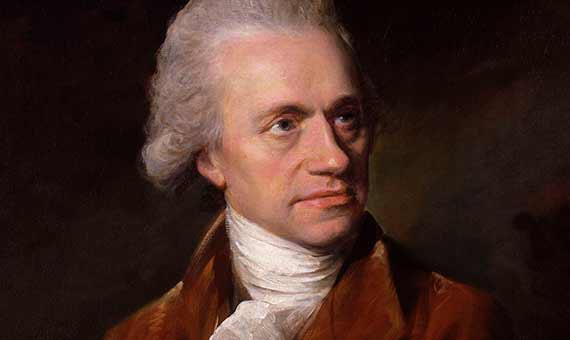In 1781, a remarkable piece of news shook the scientific world: a musician had discovered a new planet beyond Saturn. For the first time since antiquity, when only six planets were known, including Earth, the solar system had enlarged with the incorporation of a new celestial body, which was called Uranus. The feat was accomplished by William Herschel (born November 15, 1738), an organist, composer and enthusiast of stargazing, who would become one of the greatest astronomers of all time.

Herschel inherited a remarkable musical talent from his father who was an oboist. He played cello, oboe, violin, piano, harp and organ and was also an excellent craftsman who made his own instruments. Thanks to music, he began to study the relationship between mathematics and acoustics. From there, he went on to physics, then to optics, until finding what would become his passion: astronomy. At age 35, he read his first book on that science and was so fascinated that he decided to devote himself to the study of the stars. He went on to live as a musician during the day and an astronomer at night.
As his salary did not allow him to buy the instruments necessary for the observation of the cosmos, Herschel built his own reflector that was 15.5 cm in diameter and had a focal length of almost two metres. On March 13, 1781, when he was examining the constellation of Gemini, he saw a “curious, diffuse star” that was “visibly larger than the rest,” according to his notes. He soon ruled out the possibility that it was a star because it was disk-shaped and, moreover, it moved against the background of fixed stars. As the positions of the planets were well known, Herschel announced the discovery of a comet. The following observations showed, however, that the celestial body had a sharp and defined outline, unlike comets, and its movement did not follow the elongated orbits of these stars, but was slow and almost circular, indicating that it was far from the Sun.

The mathematicians of the Royal Society concluded that Herschel had discovered a new planet, the first that was invisible to the naked eye, and that it was farther from the Sun than Saturn. The finding changed the perception of the solar system: it was larger than previously thought and could hide even more distant planets.
Thanks to his recognition as an astronomer, Herschel was able to leave music and devote himself exclusively to science. He continued to manufacture and polish mirrors and went on to build ever-larger telescopes. In 1789, he constructed a telescope that was truly gigantic for the time: the mirror had a diameter of 1.22 metres and was housed in a 12-metre-long tube that pointed towards the sky like a cannon. Though cumbersome to operate, he did use it to discover the satellites of Uranus and the moons Mimas and Enceladus of Saturn, becoming a pioneer of stellar astronomy.
Other discoveries
His biggest project was to study the structure of the Milky Way. Over 20 years, he used his telescopes to count 90,000 stars in 2,400 sample areas and made discoveries that changed our conception of the cosmos, which was becoming increasingly broad. He revealed, for example, that our galaxy is discoid and that the solar system is in constant motion.
In the epoch in which Herschel lived, astronomy was only the science that studied the solar system and although the existence of nebulae was known, no one understood exactly what they were. His work was the basis for determining the nature and characteristics of these bodies. That research led to the discovery in the twentieth century that the universe is dynamic and full of galaxies. He also studied double stars, proving that they are binary systems and not mere line-of-sight associations. For the first time scientists could prove that Newton’s law of gravity can be applied to the universe as a whole.
His observations of Mars allowed astronomers to discern its seasons and he was one of the first scientists to write about the polar ice caps on the planet. In 1800, his studies on the light and temperature of the sun allowed him to detect a new form of electromagnetic radiation, today known as infrared.
Thanks to these contributions, when the German musician died at age 83 on August 25, 1822, he was an astronomer of international fame. His sister Caroline and son John continued his legacy and perpetuated the name Herschel in the history of astronomy.
Comments on this publication